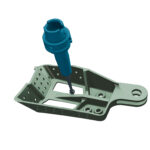Social commerce will take off in 2025, reaching more than 60% of Gen Z and Millennial shoppers worldwide, depending on the source.
TikTok is trending social platformswith about 36 million shoppers, while Facebook is larger and more established with 68 million shoppers. Both are attractive options.
In this article, we’ll focus on Facebook Shops and its two main promotional opportunities.
Create a Facebook page
Facebook Shop requires a Facebook page.
- Log in to your personal Facebook account.
- go to page section and create a new page.
- Select the Public Page option.
Navigate through six setup screens using Facebook’s interface as a guide. The end result is a minimalist Facebook page that’s ready for business.
Business suite account setup
Meta Business Suite is a single place to manage your pages, including the one you just created for your store. The setup process is easy.
- go to business suite.
- Click Create Account and follow the onscreen instructions.
- Add your Facebook page to Business Suite > Business Settings > Accounts > Pages.
Business Suite is a hub for meta assets such as Facebook, Instagram, and WhatsApp.
Set up your commerce account
Next, prepare your Facebook shop.
- Go to Facebook Commerce “Getting Started” page.
- Select Add Product.
- Toggle the “Connect to Partner Platform” switch.
- Please fill out the form.
Facebook Shop integrates directly with Shopify, BigCommerce, WooCommerce, and other stores. This example uses Shopify.
First, enter your store’s Myshopify.com subdomain in the Domains tab of your Shopify account settings. Facebook will direct you to Shopify and add the Facebook and Instagram apps.

Facebook integrates with many e-commerce platforms, including Shopify, BigCommerce, and WooCommerce.
Connect your store
If your Facebook profile is associated with multiple pages, you may need to specify which pages you want to integrate with Shopify. Next, set your desired level of data sharing between Facebook and Shopify. Meta uses data to improve advertising results, which may require you to update your Shopify privacy policy and settings.
Approved products will likely appear on your Facebook page within minutes, but in some cases it may take up to two days.
Customize your Facebook Shop
Once your Shopify store and Facebook Shop are synced, customize the latter via Facebook Commerce Manager to add payment types, layouts, and validation. Facebook allows some shop customization, but will also pull from Shopify.
Facebook typically provides a checklist with several tasks to complete before opening your shop.
Promote your Facebook shop
Most sellers promote their Facebook Shops in two ways: meta ads and organic social media content.
meta advertising. Access to shared Shopify data allows Meta to verify purchases, track website activity through pixels, and view online chats.
All this information helps Meta identify and target prospects in a privacy-compliant manner. Optimized ads should perform well. Several published reports, including one from Omnichat, Advertising spend return rate For online sellers using Shopify and Facebook Shops.
Organic social media content. The second promotional opportunity is: content marketing and email address capture.
Think of Facebook as a content distribution channel for your store. Share blog posts, product videos, and more on that platform. Its algorithm (and followers) will help you get your shop published.
Be sure to include an email capture on your Facebook page and store. On this page, add a “Newsletter” or “Subscribe” custom action button linked to an email subscription form. Next, also include your store subscribers Promotional email message.











